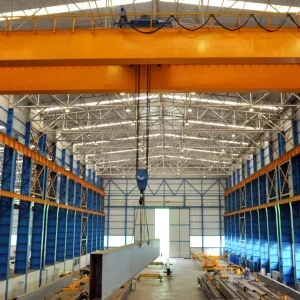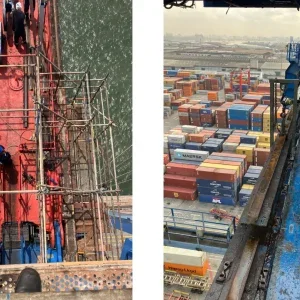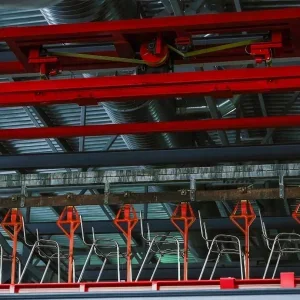Here, Mark Arthur, president, HMI, tells us about how it is launching a Hoist Duty Service Classifications video to better understand the terminology required and the challenges of the slow adoption rate of Industry 4.0 within the industry.
Arthur has been the president of HMI for two years’ now and his tenure will end at the end of this year and Jonathan Martha, president of Acco Material Handling will take over the role.
“HMI has done a good job of reaching out and educating the customer over the last couple of years and the technology we have has allowed us to do that through videos, white papers, and Blogs,” he said.
HMI currently has 14 members mainly on the east coast, covering the majority of the products sold in the United States.
Member companies are suppliers of hoist equipment (hand chain hoists, lever hoists, trolleys, air chain hoists, air wire rope hoists, electric chain hoists and electric wire rope hoists) and continue to be the source advocating hoist safety and performance.
One example is that MHI, CMAA and MMA is organising The Overhead Lifting Safety Webinar Series to encourage safe use of its products in October and HMI will chair one of the modules of the different sessions, focusing on the innovations that are available today to help manufacturers run their equipment safer and keep the product safe and keep the people that operate the equipment safe.
Arthur says from a HMI standpoint, what the industry could do better is ‘really connect with the owners, operators and the people that are responsible for the maintenance and safety of the equipment because it seems that they have a disconnect and each has questions that need answering’.
“It seems challenging that people don’t know where to go to get advice to make sure they make the right decision on equipment,” he added.
In his own role, Arthur is product support director, customer service, at R&M Materials Handling, based in Springfield, Ohio.
He said Industry 4.0 technology moves so fast but sometimes it can be slow to come to the equipment and even slower for customers to embrace the technology. ‘The slow adoption rate is surprising’.
HMI continuously holds workshops and educational classes and releases guidance notes for its members and is about to launch a video to understand hoist duty service classifications as Arthur said there is still some confusion around those.
A number of organizations; such as the American Society of Mechanical Engineers (ASME) CMAA, the European Federation of Materials Handling (FEM) and the International Organization for Standardization (ISO) publish Hoist Duty Service Classifications but each of these standards uses different names for their classifications, with little correspondence between the definitions from one organization to the other.
For example; FEM: 1Dm, 1Cm, 1Bm, 1Am, 2m, 3m, 4m and 5m; ISO: M1. M2, M3, M4, M5, M6, M7 and M8; ASME: H1, H2, H3, H4 and H5; and CMAA: A, B, C, D, E and F.
To help hoist users as they compare these different classifications, HMI has already published a document that details the different types, terminology and standards applicable in the US and elsewhere in the world. The “Compendium of Basic Information and Standards for Hoists” is offered as a free downloadable reference for users as they navigate both mandatory regulations and voluntary recommendations for usage and the video is an aid to that.
“There are many different standards that are applicable in the HMI marketplace and each one defines the duty service classification a little bit differently. Customers need to get that right to ensure their hoist lasts the way it was designed to. The video will help buyers make an informed decision when it comes to final purchase,” said Arthur.
When determining which hoist has a duty cycle that is right for a given application, a company must first define certain operating parameters. These include:
- The anticipated number of lifts per hour.
- The total number of lifts per shift.
- The number of shifts per day.
- The maximum number of starts and stops per hour
- The average distance the load is to be raised or lowered.
- The average weight to be lifted.
- The maximum weight to be lifted.
- The frequency of lifts with maximum weight.
Having this information will help an industrial hoist and/or crane company recommend the optimally sized hoist for the company’s application to ensure a safe and efficient operation. Applications equipped with an undersized hoist will experience a shorter lifespan; conversely, an oversized hoist will require more expensive maintenance and replacement parts.






